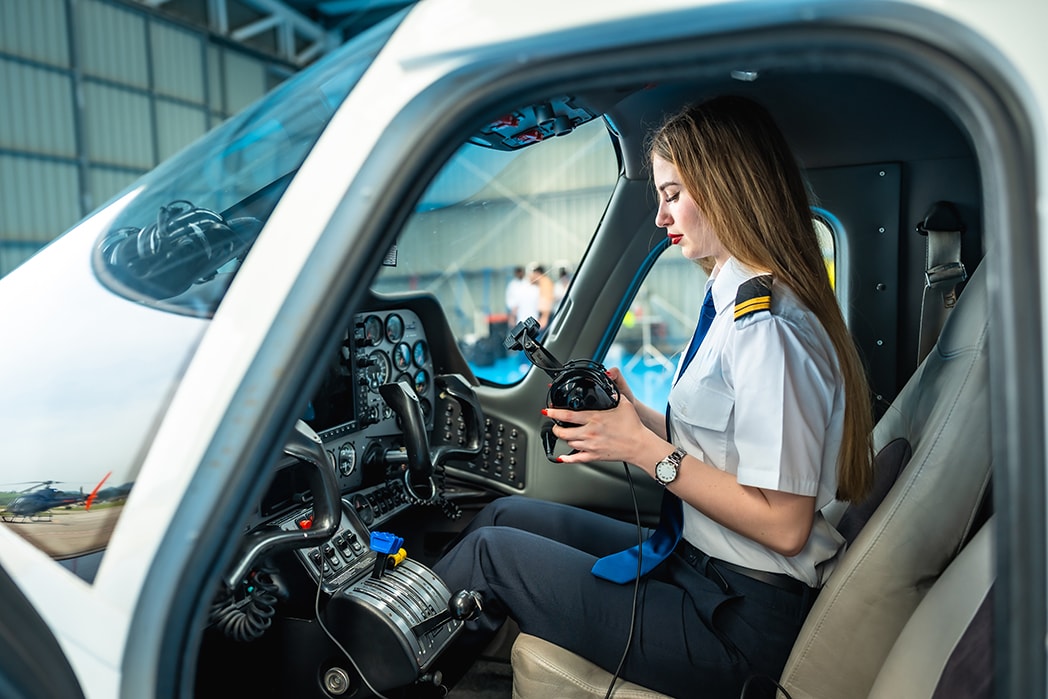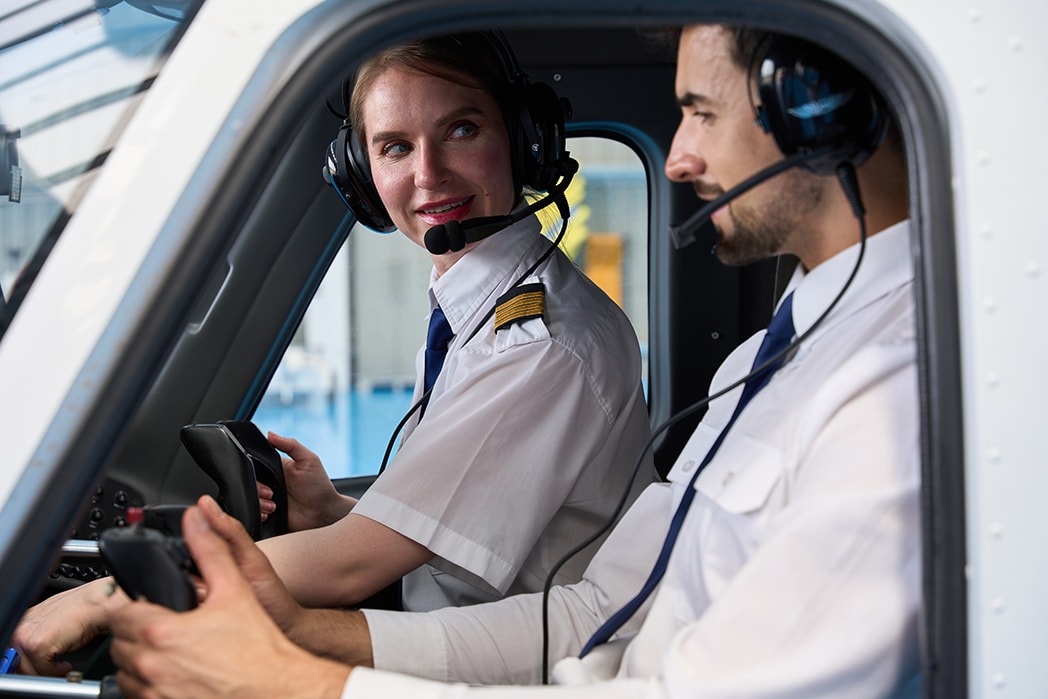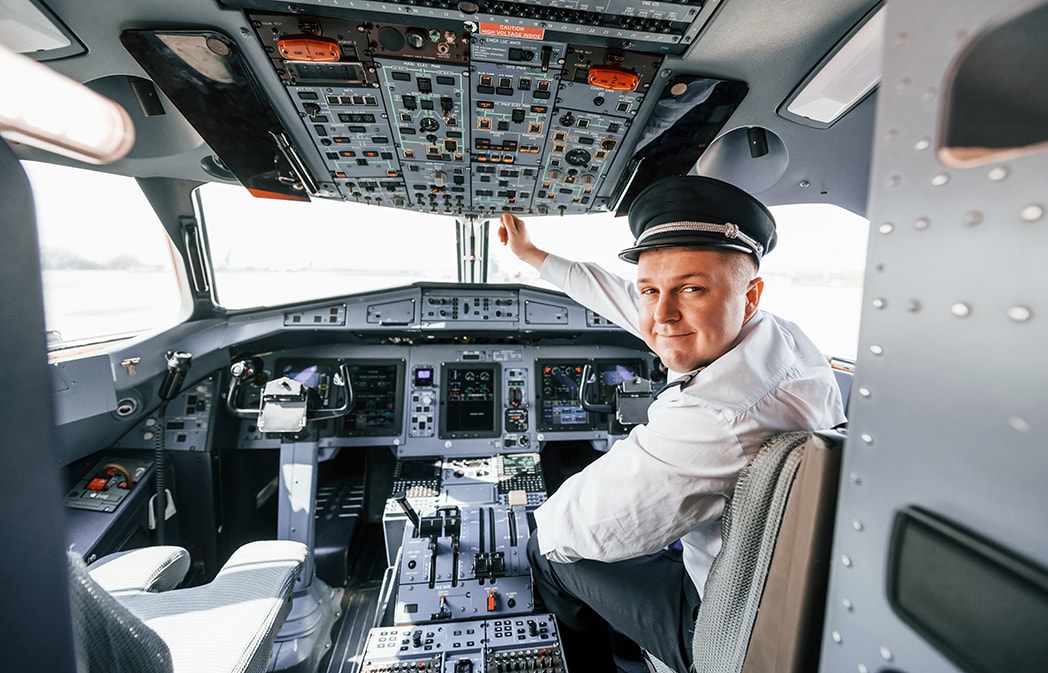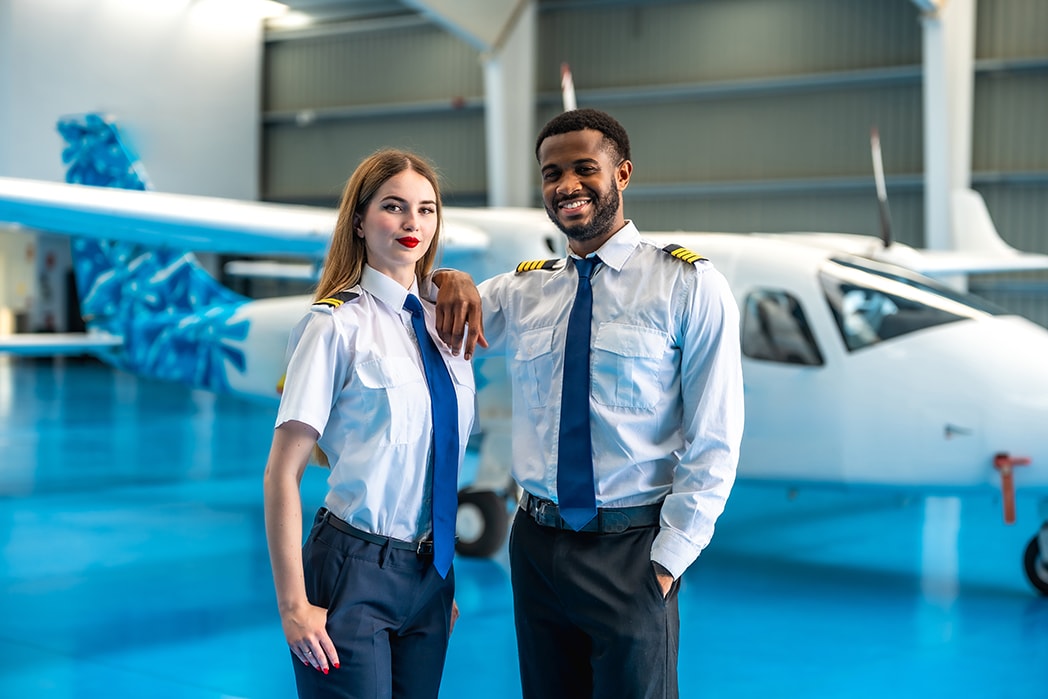Requirements for Pilot License: Key Steps & Costs Explained
Jun 30, 2025
Curious about getting a pilot license? This article breaks down all the requirements pilot license, from basic eligibility age and medical fitness to the training hours and tests you’ll need to pass. Learn about the costs and find out which license is right for you.
Key Takeaways
-
Pilot certification is regulated by the FAA with different types of licenses for different flying purposes, personal and commercial.
-
Basic requirements for pilot licenses include age, English proficiency and medical certification, with specific flight hours for each license type.
-
Total cost to get pilot licenses can vary greatly, domestic students will spend around $70,000 for an airline pilot career and private pilot license costs from $8,300 to $12,300.
Understanding Pilot Certification

A pilots license is a document that allows you to fly legally. The Federal Aviation Administration (FAA) is the governing body that sets the rules and regulations for pilot certification in the US.
There are several types of pilot licenses, each for different levels of flying proficiency and types of aircraft. These are private pilot license, commercial pilot license, airline transport pilot license and pilot in command.
The FAA’s rules define the limitations and privileges for each type of pilot certificate. For example a private pilot license allows you to fly for personal use or to carry passengers but not for compensation.
A commercial pilot license allows you to be compensated for your flying services and opens up opportunities in many aviation sectors.
Pilots should start with clear planning. Knowing the requirements for each license type helps you navigate the journey. Whether you want to fly recreationally or have a career in aviation, understanding the certification process is key.
Basic Eligibility Requirements for a Pilot License
Before you can begin flight training, you must meet specific eligibility requirements. These include age, language proficiency, and medical certification. The FAA mandates that candidates be at least 17 years old to obtain a private pilot certificate.
Additionally, proficiency in the English language is required for effective communication in aviation.
Age and Language Proficiency
To get a student pilot certificate you must be at least 16 years old. This age requirement means student pilots have reached a level of maturity to start flight training.
And you must also be able to speak English as English is the language of aviation. This means you can communicate with air traffic control and other pilots.
Medical Certification
A medical certificate is required for all pilot applicants. An Aviation Medical Examiner (AME) will evaluate you to make sure you are fit to fly.
For most student pilots a Third-Class Medical Certificate is sufficient to start flight training.
Student Pilot Certificate
This is your ticket to solo flight training. You need a medical from an Aviation Medical Examiner to become a student pilot. It allows you to start the hands-on part of your flight training and eventually fly solo.
Applying for a Student Pilot Certificate
The application process is simple. Fill it out through the FAA’s Integrated Airman Certification and Rating Application (IACRA) or on a paper form.
Submit it to a Flight Standards District Office, an FAA designated pilot examiner, a Part 141 flight school, a certified flight instructor or an airman certification representative.
You should get your student pilot certificate soon. It will be in about 3 weeks.
Preparing for Flight Training
Flight training starts with your student pilot and medical certificates. This includes hands on flight training and ground school.
Ground school covers the basics of aerodynamics, navigation, and weather plus pilot training. Knowing the things every pilot needs before stepping into the cockpit helps you stay prepared and confident from day one.
After you finish your training, you’ll be ready to take the written exam and checkride to become a private pilot for your Private Pilot License (PPL).
Private Pilot Certificate Requirements

To obtain a private pilot certificate, you must meet several requirements set by the FAA. These include:
-
Being at least 17 years old
-
Passing written tests
-
Completing the required flight hours
-
Passing the FAA checkride.
And you must have a valid Driver’s License.
Required Flight Hours
40 hours of flight time is the minimum required for a private pilot license. 20 hours with a certified flight instructor and 10 hours solo.
These hours will give you the experience and confidence to fly safely.
Written Knowledge Test
The FAA written test for a private pilot has 60 multiple choice questions covering various aviation topics. You need to score 70% or higher to pass. This test will prove you have the theoretical knowledge to fly safely.
Practical Test
The checkride is the final step for your private pilot license. Conducted by an FAA designated examiner it will test your skills and knowledge through various flight maneuvers and scenarios.
Instrument Rating
An instrument rating is a great addition to your pilot certificate, you can fly in more weather under instrument flight rules. This rating requires 15-20 hours of instrument training and will give you the ability to fly safely in low visibility.
Training can be done through various methods including accelerated courses.
Commercial Pilot Certificate Requirements

A commercial pilot certificate allows you to get paid for flying. The FAA requires 250 hours for this commercial certificate.
If you're pursuing a career in aviation, it’s important to understand the requirements for commercial pilot license including flight hours, ground training, and the practical checkride. Total cost is $28,000 to $90,000.
To get a commercial pilot license you must have at least 250 hours. These hours include cross country time and time with an instructor.
Advanced Ground School
Advanced ground school for commercial pilots covers regulations, navigation and meteorology. You must understand these subjects to pass the written and to fly safely and efficiently.
Practical Test for Commercial Pilots
The commercial pilot practical test is where you get to show off your flying skills and handle emergency situations. Conducted by an FAA designated examiner this is part of getting your commercial pilot license.
Certified Flight Instructor Certificate
Becoming a certified flight instructor (CFI) is a great career where you get to train aspiring pilots and help them become a pilot. To become a CFI you must first have a commercial pilot license and meet additional FAA requirements.
CFIs can work in educational institutions, FAA certified flight schools or their own flight schools.
Flight Instructor Training
Flight instructor training programs require a minimum of 10 hours of ground school. These programs will give you the skills and knowledge to teach aspiring pilots and prepare them to become flight instructors through flight instruction and get their flight instructor certificates.
Teaching Experience
As a CFI, getting teaching experience is key to logging instructional hours towards your career goals. Training covers teaching methods, flight maneuvers and regulatory knowledge to be an effective instructor.
Airline Transport Pilot Certificate
The Airline Transport Pilot (ATP) certificate is the highest level of pilot certification and required for captains in commercial airlines. Getting this certificate requires a lot of training and dedication and meeting specific educational and certification requirements.
Flight Hour Requirements
To get an ATP certificate you need to log a total of 1,500 hours of flight time including specific types of flying experience. You can build these hours by working as a flight instructor.
ATP Written and Practical Tests
The ATP certification has a written and practical test. The written test covers various aviation topics related to ATP certification. You need to pass both tests to get the ATP certificate.
Cost of Obtaining a Pilot License
Cost varies by certificate and training program. Domestic students spend about $70,000 to become airline pilots, all training and education included. International students spend slightly less, under $50,000.
Private pilot license costs between $8,300 and $12,300. Sport pilot certificate costs between $4,000 and $6,000. Flight training costs can vary greatly and are often the biggest chunk of the total cost.
Additional certifications like an instrument rating cost between $5,000 and $9,000. Knowing these costs will help you plan and budget your way to becoming a pilot.
Type Ratings and Additional Training
Type ratings are required for flying specific powered aircraft systems that exceed weight limits or have more than one engine, including a technically advanced aircraft.
These require additional training, a practical test and a multi engine rating to prove competence in flying the aircraft.
Type rating training includes simulator sessions and specific ground training to ensure safety and compliance.
Career Opportunities for Pilots

Pilots have a wide range of career opportunities available in various sectors:
-
Airline pilots can fly for major airlines, charter companies or corporate aviation.
-
Commercial pilot certificates are required for paid flying jobs.
-
These certificates allow sport pilots to fly for hire in other aviation sectors.
Beyond flying, pilots can work in management, training and instructional roles. These roles offer career progression and the opportunity to contribute to the industry and have an aviation career.
Corporate pilots for example fly executives and need strong communication and customer service skills.
Government roles for pilots may include flying for law enforcement, search and rescue or firefighting. There is a growing demand for airline pilots in the airline industry due to increasing air travel so it’s a good career path.
Summary
Becoming a pilot involves clear planning, meeting specific requirements and committing to intense training.
From getting a student pilot certificate to getting the airline transport pilot certificate, each step builds on the previous one so you are well prepared for an aviation career.
Knowing the costs and opportunities helps you navigate this exciting journey. Whether you want to fly recreationally or have an aviation career the sky is the limit.
Frequently Asked Questions
What is the minimum age to obtain a private pilot certificate?
To obtain a private pilot certificate, you must be at least 17 years old.
How many flight hours are required for a commercial pilot license?
You need a minimum of 250 flight hours to obtain a commercial pilot license as per FAA regulations. This requirement ensures that you have sufficient experience to operate commercial aircraft safely.
What is the cost to obtain a private pilot license?
The cost to obtain a private pilot license generally falls between $8,300 and $12,300. It's essential to budget accordingly and consider additional expenses for materials and exams.
What is an instrument rating?
An instrument rating allows you to fly in more weather and in low visibility. This is key to safety and more flying opportunities.
How many flight hours are needed for an airline transport pilot certificate?
To qualify for an airline transport pilot certificate, you need to log a total of 1,500 flight hours. Meeting this requirement is essential for pursuing a career as a commercial airline pilot.
